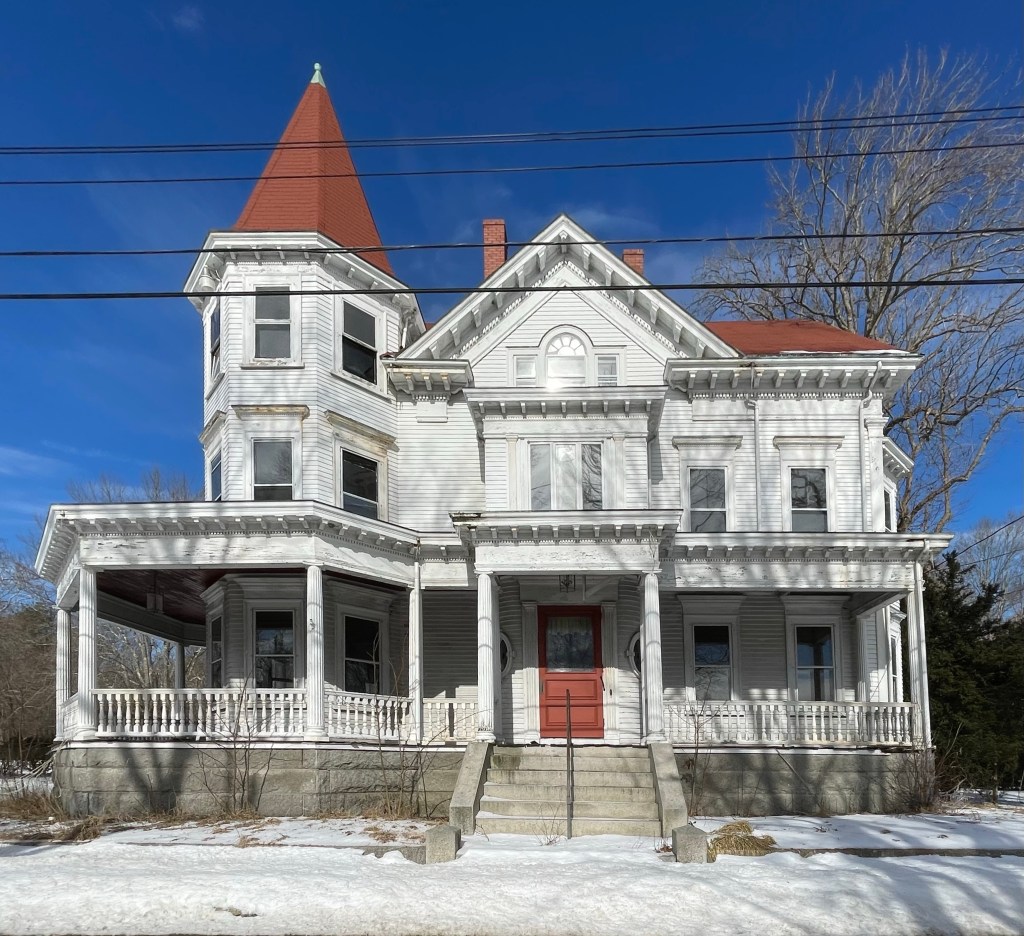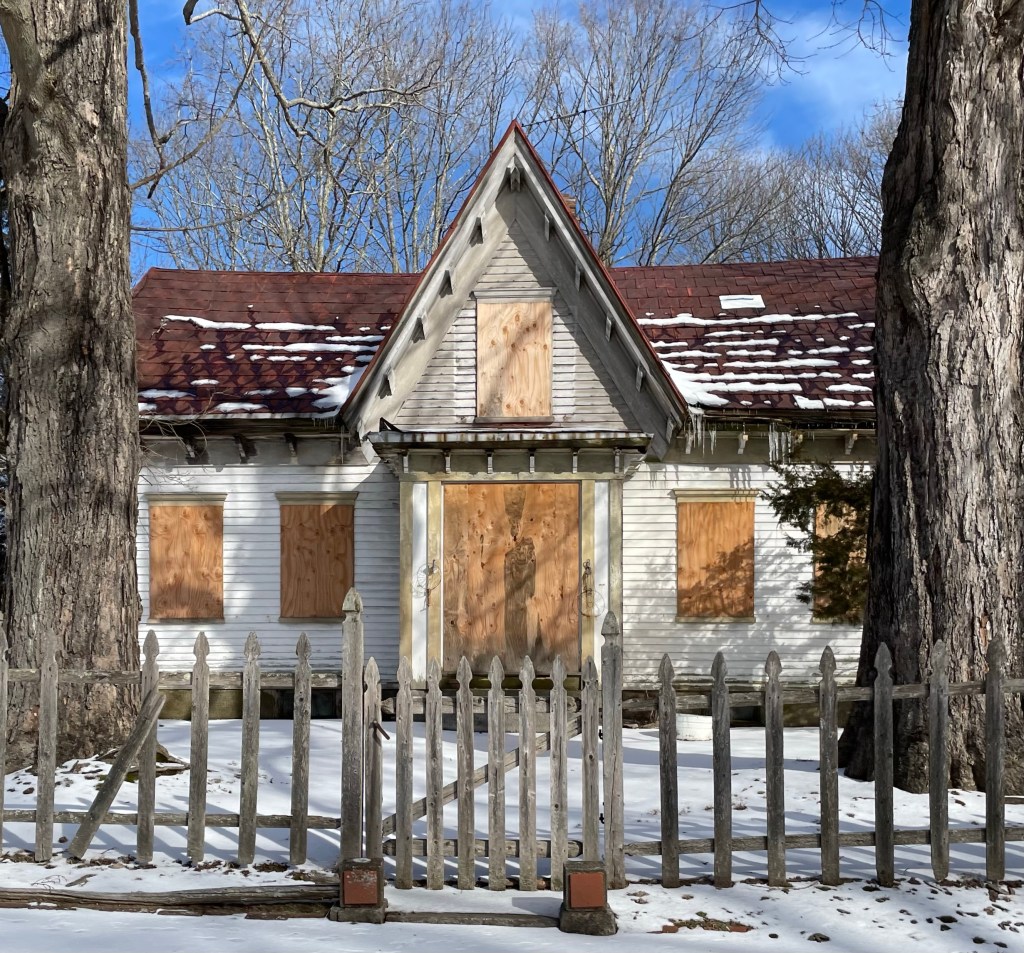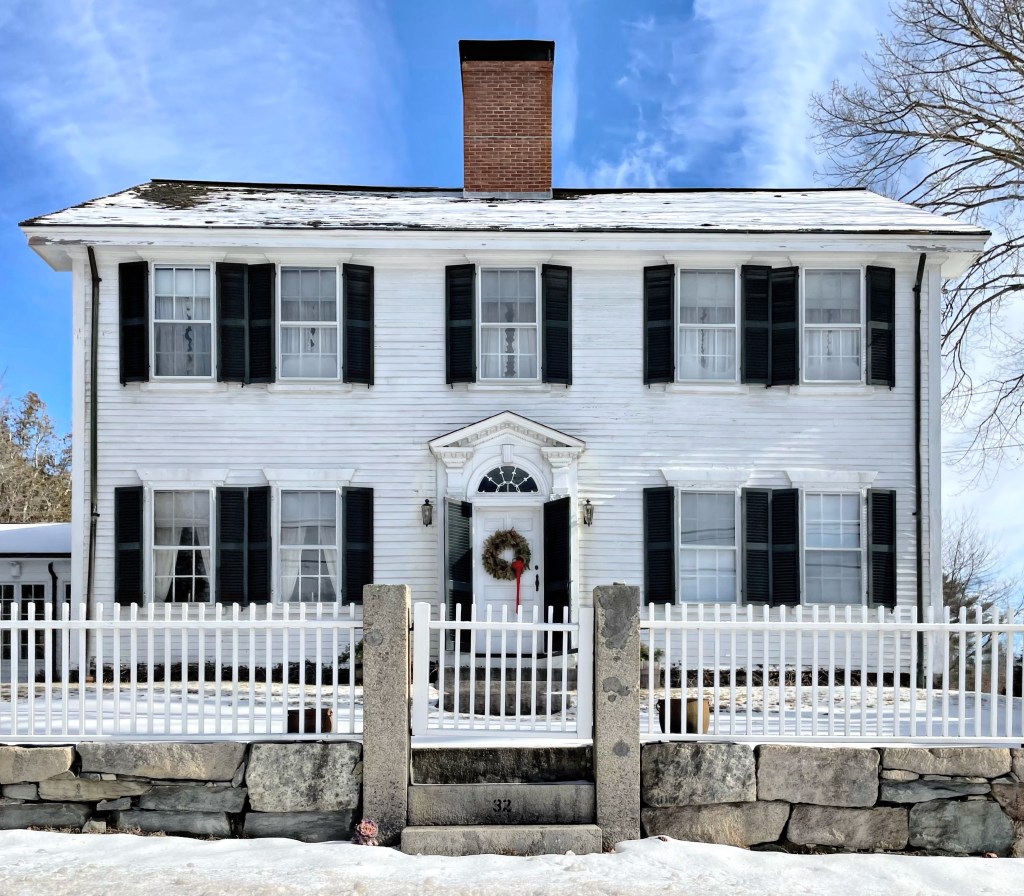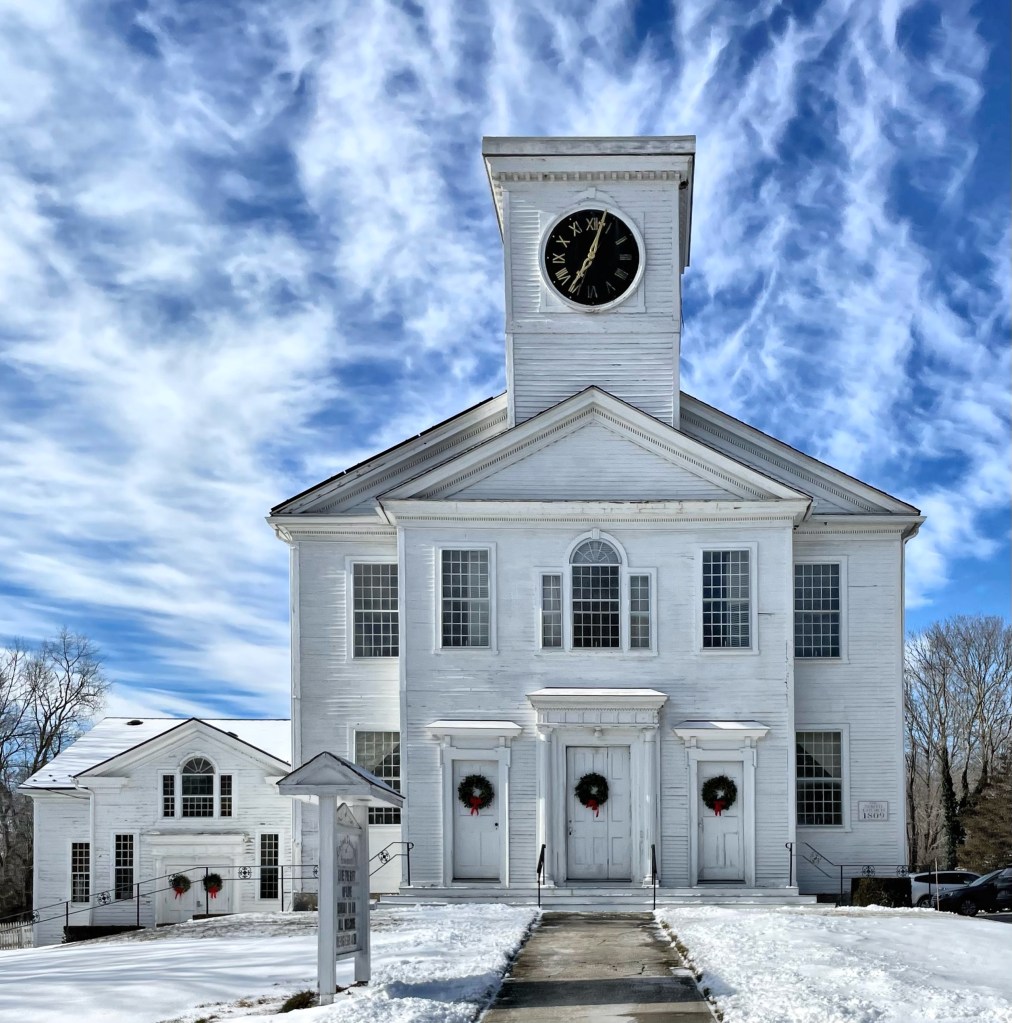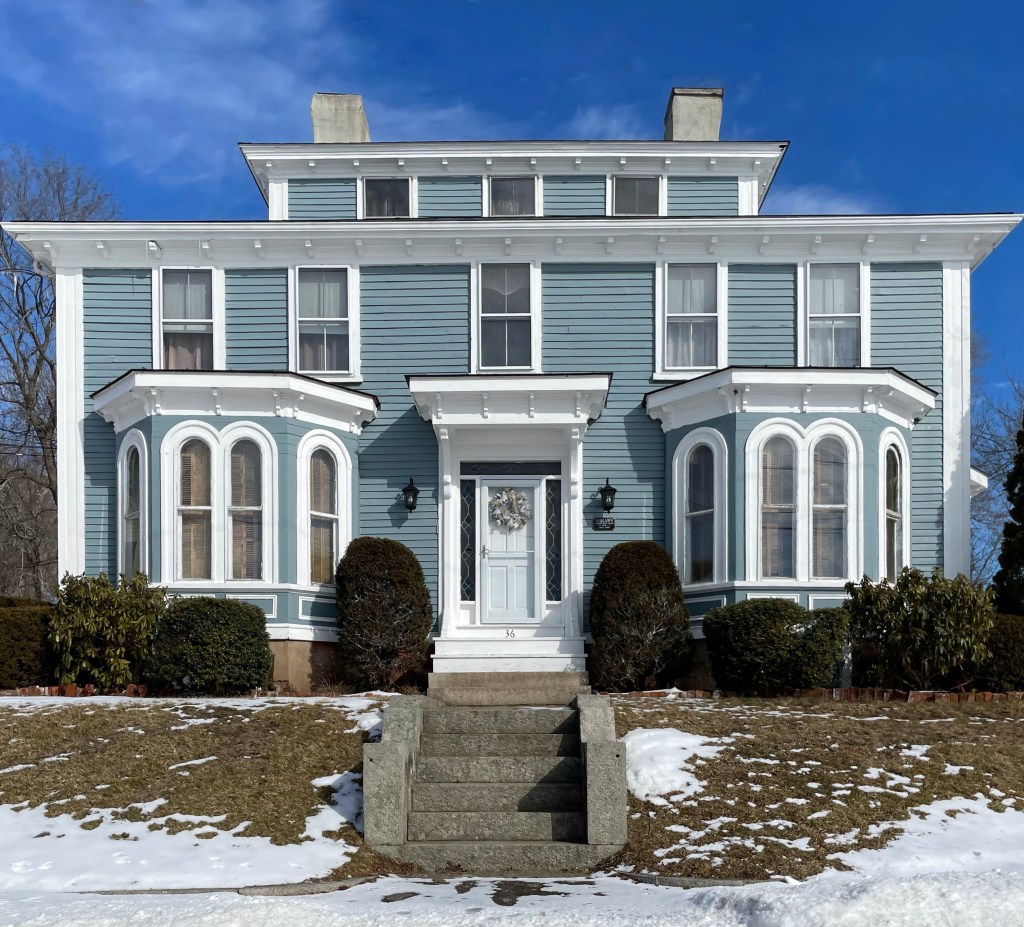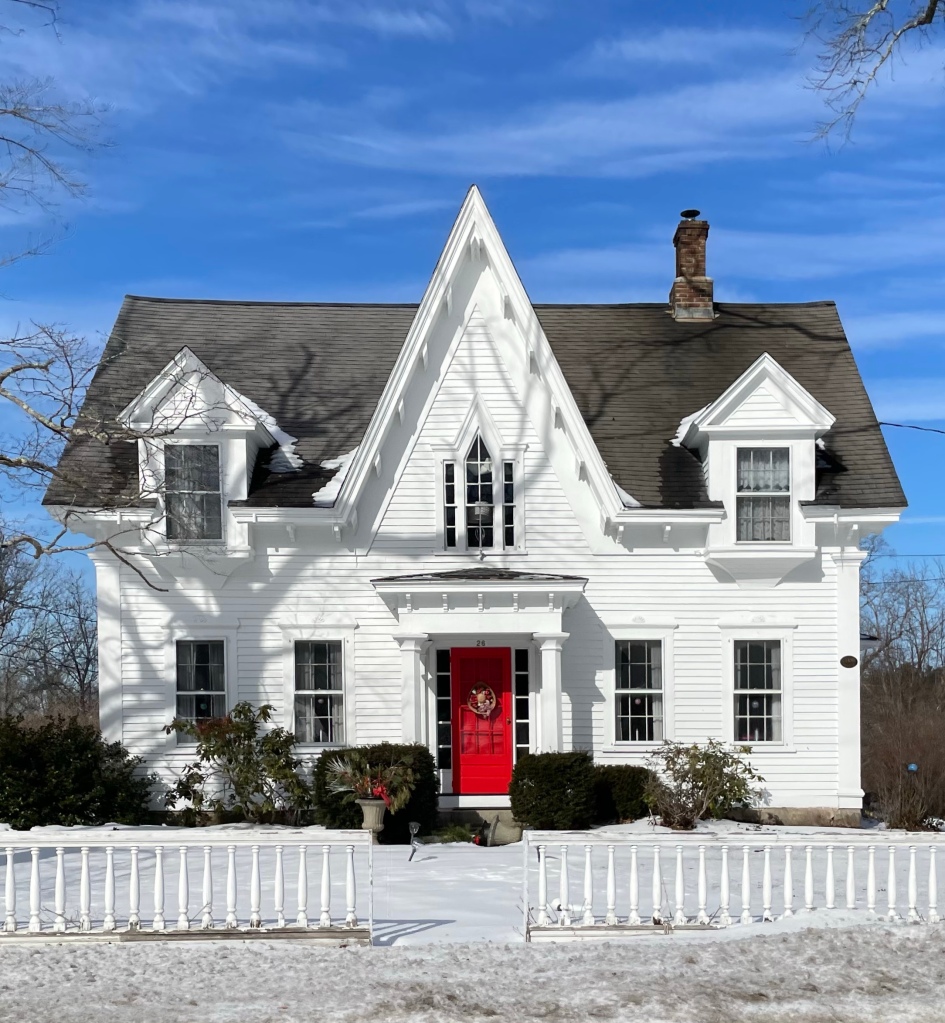
Captain Job Lawton (1795-1860) was a sea captain and wharfmaster in Assonet Village, in Freetown, Mass. I could not locate much on him other than a note about his skill on the sea, highlighted in a history of the town of Freetown. “Captain Job Lawton, on one of his many voyages across the ocean, lost his rudder at sea. With commendable ingenuity, he made a temporary one from old ropes, hung and managed it by chains passed over the stern and either side of the ship, and by his cool determination and never tiring perseverance brought his sloop safely into port. For this remarkable feat, he received high public commendation, and a substantial recognition from the insurance companies interested in his vessel and her cargo. Several models of this rudder are now in existence, one being on exhibition at the National Museum in Washington. He married Polly, daughter of Captain Charles Strange.” Lawton, in the later years of his short life, appears to have built this home, which elegantly blends both Gothic and Greek Revival styles.

